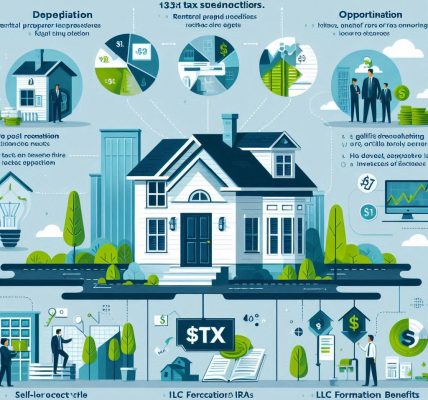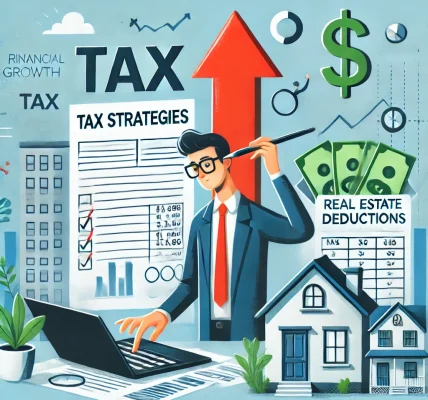Introduction
The real estate market is evolving, and sustainability is at the forefront of this transformation. Green real estate, which focuses on eco-friendly and energy-efficient properties, is reshaping how investors, buyers, and developers approach the industry. With increasing awareness about climate change and rising energy costs, sustainable properties are no longer just a trend—they are the future.
This guide explores how green real estate is changing the market, its benefits, key features, and investment potential.
1. What is Green Real Estate?
Green real estate refers to properties designed, built, and operated with environmental sustainability in mind. These properties prioritize energy efficiency, water conservation, reduced carbon footprint, and healthy indoor environments.
Types of Green Real Estate
- Residential Green Homes: Single-family and multifamily homes designed with eco-friendly features.
- Commercial Green Buildings: Office spaces, shopping centers, and hotels with sustainable construction.
- LEED-Certified Properties: Buildings meeting the Leadership in Energy and Environmental Design (LEED) standards.
- Net-Zero Homes: Properties that generate as much energy as they consume.
2. Benefits of Green Real Estate
✅ Environmental Benefits
✔ Reduced Carbon Footprint: Green buildings lower greenhouse gas emissions by using renewable energy sources. ✔ Energy Efficiency: Advanced insulation, solar panels, and energy-efficient appliances cut electricity consumption. ✔ Water Conservation: Smart irrigation systems and low-flow fixtures minimize water waste. ✔ Sustainable Materials: Use of recycled and non-toxic materials reduces environmental impact.
✅ Financial Benefits
✔ Lower Utility Bills: Energy-efficient systems reduce electricity, heating, and cooling costs. ✔ Higher Property Value: Green-certified homes often sell faster and at higher prices. ✔ Tax Incentives & Grants: Many governments offer rebates and tax benefits for eco-friendly properties. ✔ Long-Term Cost Savings: Sustainable materials and energy systems reduce maintenance expenses over time.
✅ Health & Lifestyle Benefits
✔ Better Indoor Air Quality: Eco-friendly homes use non-toxic materials and ventilation systems to improve air quality. ✔ Enhanced Comfort: Temperature regulation and noise insulation improve living conditions. ✔ Growing Market Demand: More buyers and tenants prefer green buildings, making it easier to rent or sell properties.
3. Key Features of Green Properties
| Feature | Description |
|---|---|
| Solar Panels | Renewable energy source reducing dependence on fossil fuels. |
| Energy-Efficient Windows | Minimizes heat loss and maximizes natural lighting. |
| Smart Thermostats | Optimizes energy use, reducing heating/cooling costs. |
| Rainwater Harvesting | Collects and reuses rainwater for irrigation and other uses. |
| Eco-Friendly Building Materials | Bamboo, reclaimed wood, and recycled steel reduce environmental impact. |
| Green Roofs & Walls | Improve insulation, reduce urban heat, and enhance aesthetics. |
| Low-Flow Water Fixtures | Reduce water waste without compromising functionality. |
| Electric Vehicle (EV) Charging Stations | Supports sustainable transportation. |
4. The Investment Potential of Green Real Estate
Green real estate is not just about environmental responsibility—it’s also a profitable investment opportunity.
✔ Growing Market Demand
More homebuyers and businesses are prioritizing sustainability, increasing the demand for green-certified properties.
✔ Government Support & Incentives
Many countries offer tax credits, grants, and low-interest loans to encourage green real estate investments.
✔ Higher Resale Value
Sustainable homes sell for up to 10% more than traditional homes due to energy savings and modern features.
✔ Lower Vacancy Rates
Tenants prefer eco-friendly rental properties, leading to higher occupancy rates and rental income stability.
✔ ESG (Environmental, Social, Governance) Investing
Institutional investors increasingly focus on sustainable properties as part of their ESG investment strategies.
5. Challenges & Considerations
While green real estate has numerous advantages, investors should consider the following:
❌ Higher Initial Costs: Sustainable materials and technologies can have higher upfront expenses. ❌ Regulatory Compliance: Some regions have strict building codes for green certification. ❌ Market Education: Many buyers and tenants still need awareness about the benefits of green homes. ❌ Availability of Skilled Contractors: Not all builders specialize in eco-friendly construction.
6. Future Trends in Green Real Estate
The future of real estate is undoubtedly green. Here are the top trends shaping the industry:
🔹 Net-Zero & Passive Homes: Properties designed to consume zero net energy. 🔹 Smart Home Integration: AI-powered energy management systems to optimize efficiency. 🔹 Urban Vertical Gardens: High-rise buildings incorporating green spaces. 🔹 3D-Printed Sustainable Homes: Faster, cheaper, and eco-friendly housing solutions. 🔹 Green Financing & Mortgages: More banks offering lower interest rates for sustainable properties.
7. How to Get Started with Green Real Estate Investment
Step 1: Research Green Building Certifications
Look for LEED, Energy Star, or BREEAM certifications when purchasing or developing a property.
Step 2: Choose the Right Location
Invest in areas with high demand for sustainability, such as eco-friendly communities or urban hubs.
Step 3: Work with Green Real Estate Experts
Hire architects, builders, and real estate agents who specialize in sustainable properties.
Step 4: Leverage Green Financing
Explore green loans and tax incentives to offset higher initial costs.
Step 5: Implement Smart Upgrades
If you own existing properties, consider retrofitting them with energy-efficient technologies.
Final Thoughts: Why Green Real Estate is the Future
Sustainable real estate is more than just an eco-friendly trend—it’s a smart investment strategy with financial, environmental, and lifestyle benefits. As demand for green properties grows, early adopters will gain a competitive advantage in the evolving real estate market.
Key Takeaways: ✔ Green properties reduce energy costs and carbon footprints. ✔ Investors benefit from higher property value, lower vacancies, and government incentives. ✔ Future real estate trends will favor net-zero homes, smart energy systems, and eco-friendly communities.




